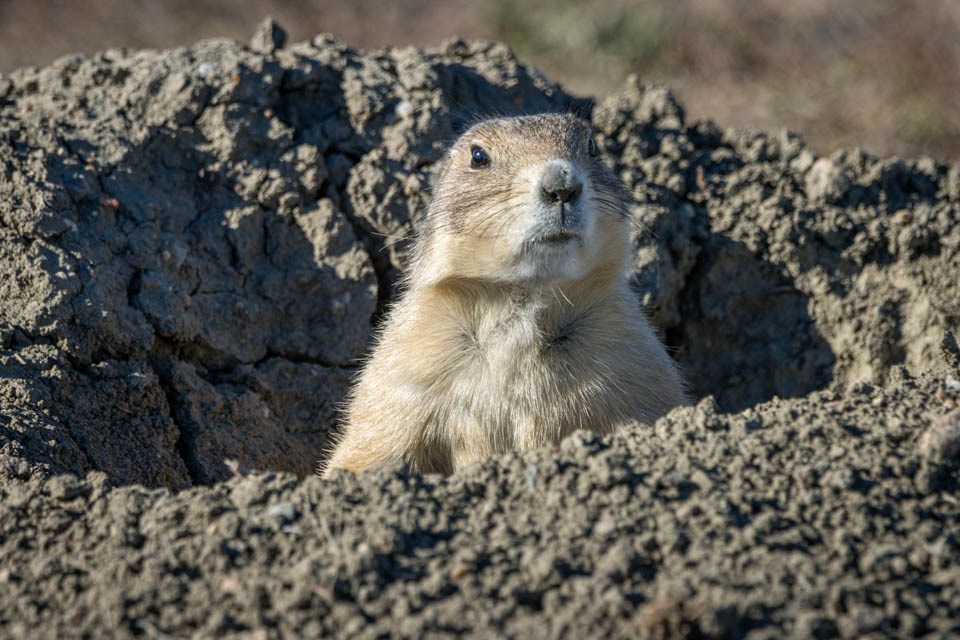SHAUNAVON — Recent calls for the reintroduction of the banned substance strychnine to help with "gopher problems" prompted the Shaunavon Standard to seek out pest control expert Dr. James Tansey, provincial specialist in insect and pest management at the Saskatchewan Ministry of Agriculture.
Dr. Tansey stated that there have been "elevated concerns" from some growers, who want to reintroduce strychnine for controlling ground squirrels (Richardson's, Franklin's, and 13-lined) and Northern pocket gopher populations, following last year's problems.
The background on strychnine is that it was once a widely used, deadly product that was phased out in 2023. However, calls have been made to reintroduce this pest control substance after the end of 2024.
Farmers appeared frustrated with the "gopher" problem, according to reports that came in last year. However, in 2025, there have been limited reports so far, states Tansey as of early June.
Dr. Tansey notes that "this year, the control (alternatives) seems to have been put down earlier, whereas last year, there may have been poor application and delayed timing, leading to a lack of effectiveness."
Dr. Tansey emphasized that alternatives can be effective.
"With strychnine, you couldn't use a bait station; many of the alternative products allow this use," he stated. "What is important, in addition to the timing of application, is the use of pre-baiting for the zinc phosphide products as per the label. That is, put down untreated grain to get the ground squirrels used to grain a food and, a few days later, apply the bait. Mixes of zinc phosphide bait and anticoagulant bait like Rozol have also been claimed to increase effectiveness."
Tansey says that strychnine is not going to be reinstated in the short term. To see reinstatement, there would need to be a new registration submission with the addition of significant new data demonstrating environmental safety. Pest control products are regulated by the Pest Management Regulatory Agency of Health Canada. They take a worst-case scenario to reviews and registrations and unlike other regulatory agencies in the world, do not consider value as part of decisions.
Dr. Tansey pointed to zinc phosphide (an inorganic compound easily used in bait stations) as one potential alternative option. When ingested by an animal, stomach acid turns it into phosphine, a highly toxic gas. It is formulated as a coated oat bait and as pellets. As indicated, pre-baiting is very important if the oat bait is used.
Other good alternatives, according to Tansey, are anticoagulant baits like Rozol and Ramik. There are several products with this mode of action registered for ground squirrel control. Anticoagulants are slower to kill than zinc phosphide or strychnine and require multiple feedings, but many growers report good results. In all cases, early application is essential. Bait aversion will occur if there are a lot of green plants available and the antidote for anticoagulants, vitamin K, is plentiful in green plants.
Dr. Tansey also mentioned the program tied in with "gopher" control through SARM (Saskatchewan Association of Rural Municipalities).
The current SARM rebate programs are:
1. A bird raptor program as an alternative to poison. This information can be found on the SARM website: The program includes a rebate for the use of registered gopher control products and materials for raptor platforms and nest boxes.
2. A rebate on the poison control program itself. The Raptor Program for Gopher Control is a cost-sharing initiative administered by SARM to help rural municipalities and First Nations manage gopher populations effectively. The program includes a rebate for the use of registered gopher control products and materials for raptor platforms and nest boxes, according to the SARM website.
A recent website posting from the RM of Wise Creek from early June explains it:
"SARM administers a cost-share rebate program to control ground squirrel (Richardson's, Franklin's, thirteen-lined, and the Northern pocket gopher) populations available to producers, RMs, and First Nations funded through Sustainable CAP.
The 2025-26 Gopher Control Program will rebate:
• Up to 50 per cent on registered gopher control products used by July 31.
• Up to 50 per cent (to a maximum of $125) for the materials used to build raptor platforms and nest boxes as a non-chemical means to increase predation. How to Claim by July 31, 2025
• Claim forms are available at the RM office. Bring your invoices into the office, and we will help you complete the application and submit it for you.
• Completed claim forms and invoices must be submitted through your RM or First Nation office to be signed by the administrator before the claim deadline.
• RMs and First Nations submit all claim packages to SARM by July 31.

